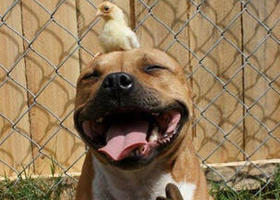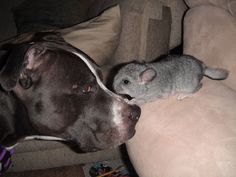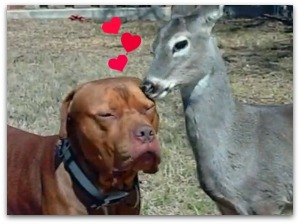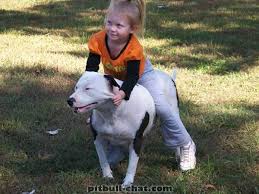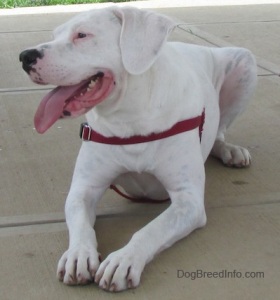I’ve gone over why pit bulls are good dogs, but there’s still an elephant left in the room; Why does no one want pit bulls, then? They fill up in shelters and it seems like no one adopts them. If they really are good dogs, why do pit bull type dogs crowd shelters all the time? Well, let’s look at the numbers first;
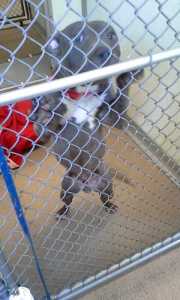 The top 3 breeds most prevalent in shelters in recent years have been Labradors, Chihuahuas, and of course, Pit Bulls. These three breeds are also noted to be the most popular breeds in the US. In 2014, Banefield, one of the largest Veterinary hospital corporation in the states, released Banefield’s Pet Health Report, which shows the Labrador, Pit Bull, and Chihuahua breeds were the top 5 owned in the US. Vet Street had conducted a poll with the conclusion the Pit Bulls were ranked in the top 3 dog breeds in 28 states. People love pit bulls, and they are becoming very popular, believe it or not! It’s no coincidence, and perhaps a tad obvious, that the more popular a dog is, the more popular they are in shelters, too. Animal People News has found this to be true with their study of dog breed popularity, the breed’s presence in shelters, and the rate at which they were euthanized;
The top 3 breeds most prevalent in shelters in recent years have been Labradors, Chihuahuas, and of course, Pit Bulls. These three breeds are also noted to be the most popular breeds in the US. In 2014, Banefield, one of the largest Veterinary hospital corporation in the states, released Banefield’s Pet Health Report, which shows the Labrador, Pit Bull, and Chihuahua breeds were the top 5 owned in the US. Vet Street had conducted a poll with the conclusion the Pit Bulls were ranked in the top 3 dog breeds in 28 states. People love pit bulls, and they are becoming very popular, believe it or not! It’s no coincidence, and perhaps a tad obvious, that the more popular a dog is, the more popular they are in shelters, too. Animal People News has found this to be true with their study of dog breed popularity, the breed’s presence in shelters, and the rate at which they were euthanized;
“Pit bulls, mostly bred and sold by noncommercial “backyard breeders,” as recently as 1993 constituted less than 1% of the U.S. dog population… By 2003, however, pit bulls had increased about fivefold in popularity–and accounted for 23% of the dogs admitted to U.S. animal shelters”
Popularity helps explain their numbers, but doesn’t completely answer that question. Labradors seem to be the most popular breed, yet pit bulls take the spot light in shelters. Why is this?
There are a few factors weighing the pit bull down; the main one being Breed Specific Legislation (BSL) and general prejudice against the breed. Many areas in the United States have some form of breed restriction against pit bulls and pit bull type dogs. This makes it harder, and in some cases illegal to live in certain counties with a pit bull, which means dogs can be taken from the home and euthanized, sometimes with a time limit as short as 10 days. BSL has in the past included certified service dogs and therapy dogs, as well. I couldn’t imagine many people wanting to risk their pet being euthanized, or jump through the hoops and pay the fees some cities place to own a pit bull, when buying a lab puppy would be cheaper and easier.
Even in places where BSL is not a law or regulated, the amount of prejudice against pit bull type dogs is hard to ignore. It’s  difficult enough to find a decent apartment that will allow dogs. However, pit bulls are the most common breed restriction on apartments. As if that isn’t bad enough, even home owner’s insurance can fluctuate on dog breeds, of course pit bulls being the most common to increase insurance. Pit bulls could be one of the hardest breeds to live with solely because of restrictions placed on this breed. It’s no wonder the most common reason dogs were surrendered to shelters was because the owner was moving (7%), and the second most common reason was for land-lord issues (6%).
difficult enough to find a decent apartment that will allow dogs. However, pit bulls are the most common breed restriction on apartments. As if that isn’t bad enough, even home owner’s insurance can fluctuate on dog breeds, of course pit bulls being the most common to increase insurance. Pit bulls could be one of the hardest breeds to live with solely because of restrictions placed on this breed. It’s no wonder the most common reason dogs were surrendered to shelters was because the owner was moving (7%), and the second most common reason was for land-lord issues (6%).
If that was not enough, there are also many rumors surrounding pit bull type dogs, which keeps people from adopting dogs that would otherwise be a good fit. Including the myth that many pit bull type dogs were abused or used in fighting rings. In reality, shelters across the nation only receive 1-2% of their animals from cruelty cases, although some of that number could be inflated because they include animal hoarders. The social stigma surrounding pit bulls is also a factor; people want a dog they can walk in public, not be shamed at in dog parks. Pit bulls are usually the first to blame in dog bite situations, and unfortunately questions are often asked after the sentence (Warning, Graphic!). So it can be a little nerve wracking for the faint of heart; sadly pit bull owners will sometimes have to grow into thick skin, something that not everyone is cut out for.
There’s no question that pit bulls tend to stay in shelters longer, and no doubt for some of the reasons previously mentioned. However, the very people trying to get them out of shelters can be the pit bull’s biggest enemy sometimes. Yes, I’m talking about the animal shelters and rescues themselves! In some cases, rescues and shelters have restrictions on their dogs, their adopters, and even what the adopter is allowed to do with their dogs. Having a strict and drawn-out policy cuts down on potential adopters exponentially, and even for the people that make the cut, such rigid guidelines can be a turn-off for some adopters.
Just because they are a little bit more prevalent, and are potentially harder to adopt out, does not make them bad dogs! Most of the average pit’s grievances stem from their negative stigma with the human population, and not from the dogs themselves. So if you find a pit that you like, and that likes you back, don’t let that reputation keep you from getting your best friend!



